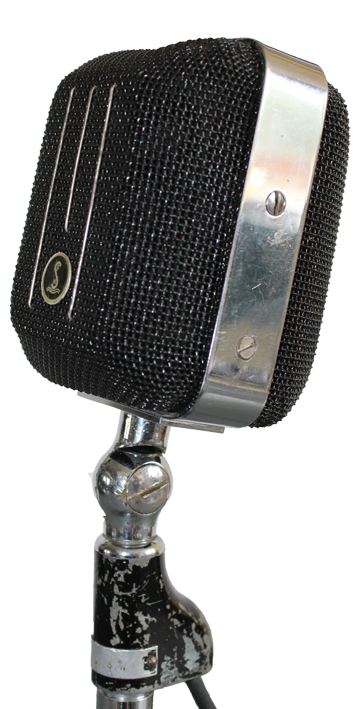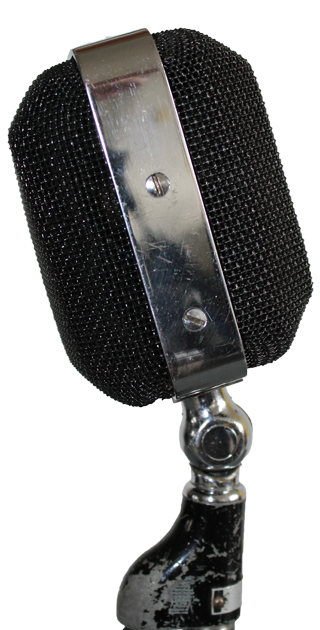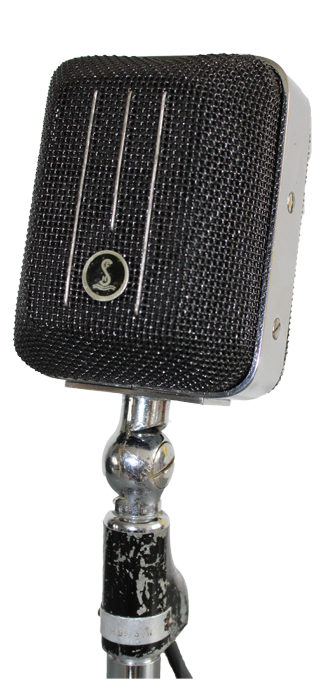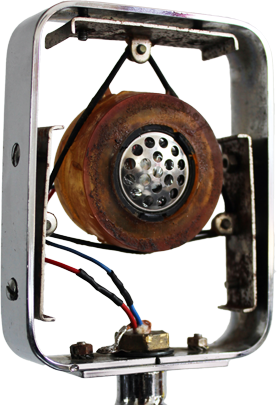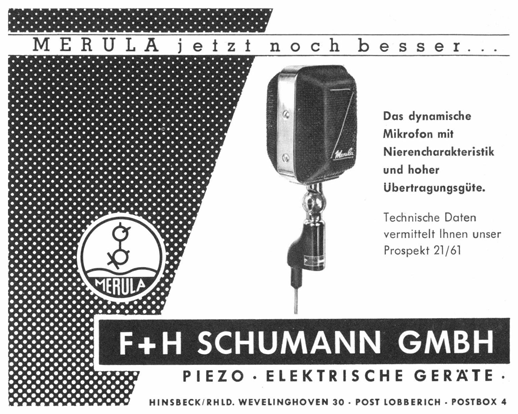|
This month a look at a little-known West German microphone: the cardioid dynamic Schumann MDS-3, which was also sold as the Merula MDS-3.
It was advertised as 'Kapellen Mikrofon'( Chapel microphone), so good for use with brass bands, possibly for announcements, because I can hardly imagine that such a microphone could properly reproduce the sound of a large brass band.
Schumann was the German importer of Ronette's crystal microphones and pick-up elements, later he started selling them under his own name, Schumann, and later also as 'Merula' (Blackbird).
Some people confuse the type shield, with a stylized 'S', with Shure, which is understandable but unjustified.
In contrast to Ronette, which limited itself to piezoelectric (crystal) designs, Schumann later also started supplying dynamic models.
Because Schumann was a trading house rather than a manufacturer, it is more than likely that the dynamic microphones were also sourced elsewhere. Since several of those types have clear similarities with the German Peiker factory's models, it is likely that Schumann sourced them from that company. Peiker was not a company known for quality products, their production was mediocre.
In terms of appearance, a number of the models deviated from Peiker, they often stayed closer to the Ronette design, which itself relied on the models of the American Astatic brand..
The design of the MDS-3 is hybrid: it shows many characteristics of the earlier Ronettes, both in terms of housing and the spring-mounted capsule, but it is also reminiscent of the then popular AKG D12, with its block shape.
The quality of the microphone element is downright poor and it has not stood the test of time, as can be heard in the audio fragment. It is not certain that this is the original capsule, since the microphone has clearly been worked on.
I received it without a cable and inside I found a screw and washer that did not belong there, so the element may have been substituted earlier, although it fits well in the original suspension.
Schumann-Merula was active from about 1950 until 1967, after which the company ended its activities, perhaps because the relatively small company could not compete with the better microphone brands.
These microphones are popular because there is more than enough room to use a different and better element, a dynamic or ribbon type. With such an update, the microphone can start a second life under the admiring gaze of fans of nostalgic microphone shapes.
Many more types feature in my book Witnesses of Words. More information about that can be found at www.witnessesofwords.com
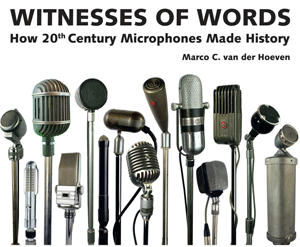
|
|
|
|
|
|
Above: the massive looking MDS-3 Below: sound, opened & Merula 1961 ad |
|
|
|
|


 Video's
Video's Contact
Contact


